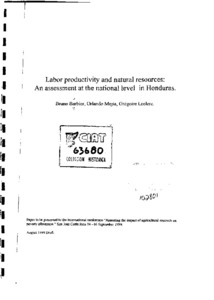Mission
To reduce hunger and poverty, and improve human nutrition in the tropics through research aimed at increasing the eco-efficiency of agriculture.
People
CIAT’s staff includes about 200 scientists. Supported by a wide array of donors, the Center collaborates with hundreds of partners to conduct high-quality research and translate the results into development impact. A Board of Trustees provides oversight of CIAT’s research and financial management.
Values
- Shared organizational ethic
- We respect each other, our partners, and the people who benefit from our work. We act with honesty, integrity, transparency, and environmental responsibility in all of our joint endeavors.
- Learning through partnerships
- We work efficiently and pragmatically together and with partners. Considering our diversity to be a key asset, we adapt readily to change and strive to improve our performance through continuous learning.
- Innovation for impact
- We develop innovative solutions to important challenges in tropical agriculture, resulting in major benefits for the people who support, participate in, and profit from our work.
Members:
Resources
Displaying 516 - 520 of 958Método participativo para identificar y clasificar indicadores locales de calidad del suelo a nivel de microcuenca
Mapeo, análisis y monitoreo participativos de los recursos naturales en una microcuenca
Labor productivity and natural resources: an assessment at the national level in Honduras
The study establishes the link between agricultural labor productivity and natural resources variables at the national level in Honduras. We show through spatial analysis of productivity and natural resources that the relationship between natural resource conditions and agricultural productivity is not as direct as one can imagine. Length of the rain)" season has a strong and quasi linear relation with income. Soil has little impact on productivity as well as slope and altitude since coffee production in the mountain has a strong relation on productivity.
Land use systems and dynamics in Pucallpa, Peru
Labile N and the nitrogen management index of oxisols in the Brazilian cerrados
The effect of land use on the availability of soil nitrogen (N) was studied by separating total soil N into one labile and one stable fraction by oxidation and extraction of labile N with potassium permanganate. The nitrogen management index (NMI) was calculated according to Blair et al. (1995) for the carbon management index. In all systems, labile N released by potassium permanganate was a better indicator for nitrogen availability than were total and stable N. The NMI was a good indicator for N availability but gave no information on the total amount of N.



